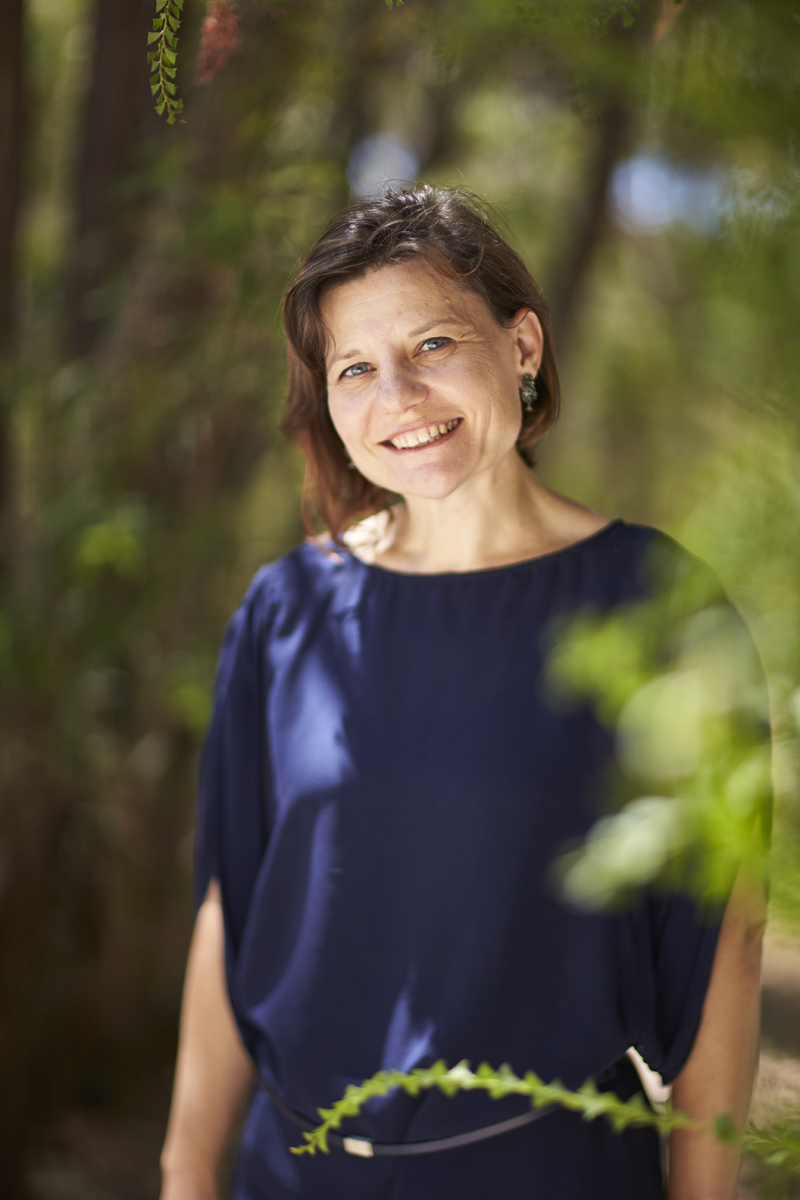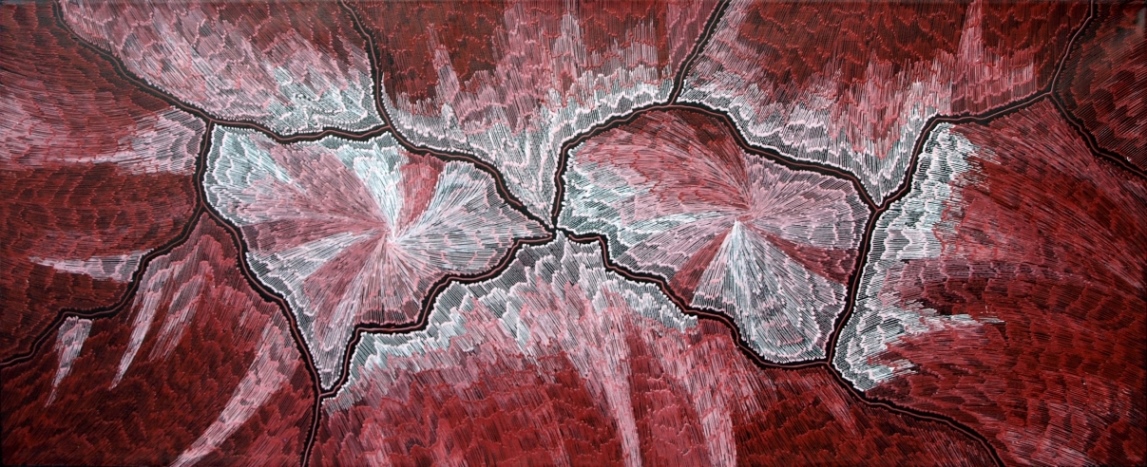Ana Nail – Curriculum, Aboriginal Art and Intent
Geographe Primary School Visual Arts teacher Ana Nail has a passion for helping her students understand Aboriginal art. Her work in this area has been recognised by a WA Premier’s Primary Teacher of the Year award. Ana contributes to both National and State arts curriculum development. In this interview Ana reflects on what is changing in education about Aboriginal art and culture and what is needed to build on that change.
Ana, what do you mean by honourable and respectful intent?
I heard a great ‘Welcome to Country’ speech from a Fremantle elder some years ago. He talked about a time when he was younger and he went to school. He was told to sit at the back of the classroom because basically there was no use for him. He was almost separated even though he was in the classroom. The message was that little was expected of him and teaching him was not a priority. During his talk this man asked that his children be able to sit alongside anyone in that room and learn as any other child would.
His talk left me with an understanding about ‘intent” as it applied to my work in the classroom. He was asking us to have a go at teaching with an intent that is “honourable and respectful”. That is a really good message and it gave me more confidence. There may still be times when I am teaching that I will inadvertently make an error and say or do something inappropriate. However, if I make the effort to find out the authentic knowledge and read up and speak to people, especially to local elders or custodians, then it is ok if I sometimes get it wrong. Learning something new is going to involve some degree of trial and error. It is all about striving for authenticity and respect in your approach.
What were you taught about Aboriginal culture when you were at school?
I can’t actually remember being taught anything much about Aboriginal culture at primary school. Perhaps the only thing that was ever mentioned was the Aboriginal names for different localities. So the name for Yellagonga Regional Park has an Aboriginal word in the name and that word was discussed.
High school art was mainly about art works in established art galleries. We didn’t cover contemporary art then as you would now.

How is this different to what you are seeing as taught now?
Today art in education might be about skateboard design or T-shirt design. It doesn’t necessarily have to be about art work in a gallery.
It’s difficult to separate my own personal experiences in education and generalize it to the broader teaching community. There are more discussions about the need for professional learning to aide teachers’ understandings and improve knowledge. This may be due to development and implementation of the Australian Curriculum three Cross Priorities, one of which is Aboriginal and Torres Strait Islander Histories and Cultures. This Priority is a conceptual framework where Aboriginal history and cultures are embedded where appropriate within the curriculum.
In Visual Arts, this can be seen in the content descriptions such as in Year 3, where students “explore ideas and artworks from different culture times, including artwork by Aboriginal and Torres Strait Islander artists, to use as inspiration for their own representations.”
For me it became more of a focus because I am keenly interested in the natural environment. I’ve noticed the Aboriginal students I teach have great strengths when the content we teach is related to the natural world and are also strong visual learners. I’m also, fortunate to be working with educators, who are Aboriginal and have shared some knowledge with me and support me to improve my teaching for all students. That is why I find Aboriginal history and cultures and communities so fascinating. Their knowledge of the environment and how this is manifested in their art really resonates with me.

Many art teachers seem to have a lot of personal interest in Aboriginal art. Why is so little taught about it in the classroom?
This is actually changing. There is real interest in teaching more about it. Even though we are seeing some wonderful work being done in developing resources, the complexity of Aboriginal art means there is still work to do finding the right resources for the classroom. This is era of accessability to so much information, as an educator can be quite daunting, especially since a lot of information has been quite simplistic about Aboriginal art.
When I was researching or learning about Aboriginal art I was looking for sources which were authentic and that I could trust in their accuracy of content. When you teach, it’s not just about information, education is far more complex than that. So too is Aboriginal Art. Put them together and it can be hard to know where to start. Positive will is there but we have a way to go before teachers feel comfortable and confident exploring Aboriginal art and culture in their classrooms.
My daughter belongs to a younger generation and she sees what is happening in schools today as a real improvement on what I experienced. She says that there is a lot more information but it’s still quite reserved. We recently had a conversation about “isms” in art and the classification of art periods. When it came to Australian art I thought about colonial art, the Heidelberg school, landscape, modernist, contemporary and Aboriginal art. Then I thought about more than 40 000 years of art in that one phrase “Aboriginal art”. There is still quite a way to go before there is a bigger, clearer story about Aboriginal culture and history that is confidently presented in classrooms.
You have been involved with the new Australian curriculum, what was your role?
My role was to provide feedback on the ACARA Visual Arts trial, and then later to provide work samples for years 2, 4 and 6 for the Australian Curriculum in Visual Arts.
Do you think this new curriculum is going to open up opportunities for exploring Aboriginal art and the themes within it?
There was already a pre-existing interest in Aboriginal histories and culture in art. Now it’s written in the content descriptions, it’s reminding people about the need to share Aboriginal histories and cultures.
The question is what part of it? It’s a broad, broad area. Is it traditional Aboriginal history and cultures? Is it contemporary? I am teaching students with an Aboriginal background. I love exploring more about the culture and art that these Aboriginal students should rightly feel very proud of. The art that Aboriginal artists have created and are still creating today is just amazing. It is celebrated around the world. Now there’s even an artwork on top of the Louvre. That is the work of Australian Aboriginal artists, that is phenomenal. What an honour, what a statement about Aboriginal art on the world stage. Yet strangely there is still such a limited conversation about this in the classroom. Perhaps people don’t want to get it wrong so they stay away rather than get it wrong.
There is also the issue of thinking about individuals as artists first and indigenous second. I see an artist first and then I will look into their art to learn more about their message or why they have painted that way. That’s probably the direction I’m taking.
I reflect upon my teaching and question whether what I do is tokenistic It’s so important for teachers to have a greater understanding about why this culture is so exciting and important and how it can add value to to students’ understanding of the world and society they live in.
What needs to happen to help teachers feel more confident exploring this area?
It is important to understand the content and the knowledge, and what was/is appropriate to share. Some sort of linkage with the artist helps in this area. The further the information is away from the artist, the less I feel comfortable with it. So if I could speak directly to the artist and then work with them, I would feel comfortable teaching that because it’s their work. I’m showing respect for what their understanding is.

What frameworks are teachers currently using in their approach to art teaching?
Many people have heard of the National Curriculum as it has been in the papers recently, this is referred to by teachers’ as ACARA and the Australian Curriculum. ACARA is The Australian Curriculum, Assessment and Reporting Authority.
In Western Australian, Visual Arts teachers are currently in transition towards teaching the Western Australian Curriculum. This curriculum, is in its simplest terms, has been adopted and adapted from ACARA’s Australian Curriculum.
Western Australian Visual Arts teachers are at the moment familirising themselves with this and will be using the Western Australian Curriculum and Assessment Outline. This outline includes policy advice and guidelines for WA schools – this includes government, non government and home schools. The School Curriculum and Standards Authority, which often is referred by an abbreviated term, SCSA. SCSA is an independent statutory authority that is responsible to the Western Australian Minister for Education.
In developing the Western Australian syllabus and supporting materials, SCSA has involved teachers, like myself, in this process and one of the many interesting discussions I have had at these workshops is how we support primary teachers to teach the Visual Arts.
Primary teachers who teach art don’t necessarily have an art education, an arts degree or background. Even those that do, like myself, might have very little exposure to contemporary Aboriginal art and how that can be explored.
I reflect on my own personal understandings of Aboriginal histories, cultures and artwork and how much has changed in the art world since the 1980’s popularity of Aboriginal Art. I see much more than the aesthetic qualities of those beautiful dot paintings. I see wisdom, kinship and an understanding that I value. But I am unsure how to explain these concepts to others, as parts of the stories and artworks are about deep, personal and sacred stories that may not be not be right to share.
When you consider the complexity of Aboriginal art and culture it makes sense that teachers feel a need for a greater level of guidance. There is quite a bit of work needed here. We need to build bridges between indigenous artists, teachers and students that work well on many levels and bring about a deeper understanding of Aboriginal culture. Just how we do this is very much work-in-progress and a conversation worth continuing. I am very excited about being part of that conversation.
Read more:
